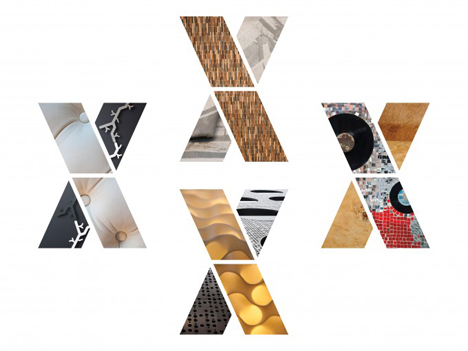
 Images, courtesy of Robynn Butler, are from a co-design initiative with Savannah High School students and SCAD Sustainable Design students, piloting frog's Community Action Toolkit. For more information on the initiative, visit designethos.org
Images, courtesy of Robynn Butler, are from a co-design initiative with Savannah High School students and SCAD Sustainable Design students, piloting frog's Community Action Toolkit. For more information on the initiative, visit designethos.org
This is the third article in a series examining the potential of resilient design to improve the way the world works. Join designers, brand strategists, architects, futurists, experts and entrepreneurs at Compostmodern13 to delve more deeply into strategies of sustainablity and design.
I recently picked up The Best Dictionary for Students, an elementary school reference that my twin daughters use daily. It seemed perfectly suited to me because, who, after all, isn't a student. This small dictionary has 410 entries that begin with the letter combination 'co,' beginning with coach and ending with cozy. Co-design is not one of those words. But many of the words beginning with these letters are germane to the vibrant conversation around co-design: commitment, compassion, complex, congregate, consequential, to name a few. This is to be expected, considering the Latin origins of the prefix: together. With a multitude of English language concepts fundamentally connected through this prefix, it seems fitting to more deeply explore some of the affiliations inferred by their shared linguistic origin.
Today's designers have benefitted from the development of young fields of practice such as design for inclusivity, and human-centered design. These efforts focus on delivering solutions through immersive (for the designer) and inclusive (for the community) processes, which the designers then sensitively transform into 'solutions,' whether they be products, services, experiences, or tools (visioning, strategic, etc.). Other fields of practice—emerging more from the urban design context, and with an emphasis on community resilience—focus more on designing the potentials for solutions to emerge from the local context itself. As one example, Asset Based Community Development (ABCD) eschews the all too common 'needs-based' approach for the sake of identifying, celebrating and empowering assets that already exist within the community.
The gap between these two approaches has been narrowing, and the emerging bridge is being constructed through an array of creative experimentation. Growing trends in mass customization such as Open Source Ecology, and design-driven community resources such as frog's Community Action Toolkit are examples of this materializing connective tissue. This essay is an invitation to more deeply consider the ideas that have been percolating in some of these spaces. I discuss two words from this 'co' bounty that are associated with the practice of co-design, then introduce a third word—quite literally—which explores a paradox borne of two contradictory root words. Together, the words act as a framing device that can aid in the exploration of the concepts behind this evolving process we call co-design, specifically in the social sector. The three 'co' words do not constitute strategies as much as reflections on the nature of committing to this dynamic arena. I invite more terms to be added to create (co-create) a Designer's Dictionary of 'Co.' Those compelled to consider the origins of co-design can find many sources dedicated to more rigorous investigations, such as Sanders and Stappers' Co-Creation and the New Landscapes of Design, as one of example of many.

Design as Conduit
A conduit is an entity of transition between spaces, states or usages. Accordingly, if the energy on one end of a conduit lacks sufficient order or density, or if there is an inability on the other end to 'carry the charge', then this kind of channel is little more than the means by which energy is transferred from one unproductive space to another, or worse, from a productive space to an unproductive one. Co-design is a conduit. And the energy that co-design aims to transfer exists within the wisdom, passion, creativity, and tacit knowledge of the parties involved.
Yet, there is another dimension here that relates to the nature of connectivity with individuals not in immediate contact with the initial co-design process. The people in these concentric and loosely defined rings represent not only those who may be influenced or changed in some way, but those who would influence still others further from the original process. This focus on connectivity and continuity is an important facet of co-design, and not merely as a cautionary reference to the law of unintended consequences—as important as that is—but as a reminder that ideas which emerge from co-design must be so deeply embedded in the community that members of that community who were not directly involved in the co-design process gravitate toward them intuitively. With IDEO's ">Human-Centered Design approach in mind, the arc of progression for the design process might run through stages that focus on: observations, stories, themes, opportunities, solutions, prototypes and implementation plans. Yet, the means by which designers build capacity within the community to design solutions themselves requires that this process is fully owned—and operated—by the community before the end of this sequence.
(more...)













 First Place: Heman Au, Arizona State University - Duo Kitchenware
First Place: Heman Au, Arizona State University - Duo Kitchenware First Place: Juan Jimenez, University of Houston - Smart Measure
First Place: Juan Jimenez, University of Houston - Smart Measure Juan is currently seeking a manufacturer, but he noted that the prototype was 3D printed
Juan is currently seeking a manufacturer, but he noted that the prototype was 3D printed














 Photo of Moleskine study model
Photo of Moleskine study model






























 With additional editorial support from Nathan Jones, Keith Lampi, Gaylon White, Jos de Wit
With additional editorial support from Nathan Jones, Keith Lampi, Gaylon White, Jos de Wit Every few years, villages in Mudimbia, Kenya are destroyed from floodwaters.
Every few years, villages in Mudimbia, Kenya are destroyed from floodwaters. 
 Victims of the 2010 earthquake in Haiti received HydroPacks
Victims of the 2010 earthquake in Haiti received HydroPacks







